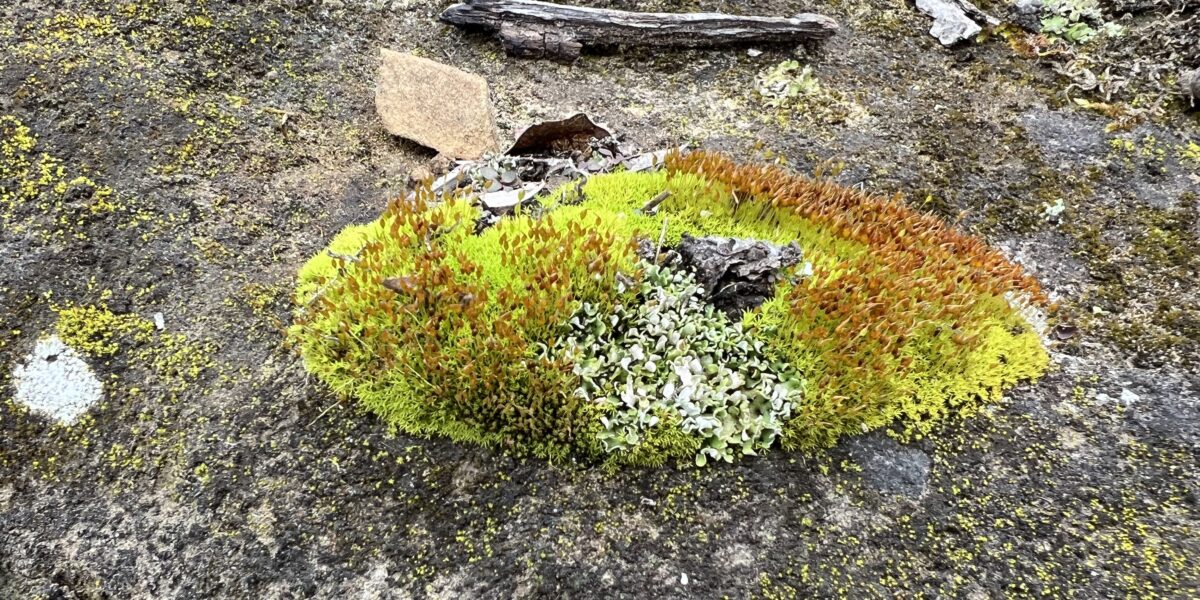Weissia controversa from Woodson County with sporophytes in a managed burned oak woodland.
This is one of four articles on Kansas mosses that first appeared in the Kansas Native Plant Society’s Newsletter, vol. 45, Number 2.
Early spring is a special time in Kansas with chorus frogs calling, woodcock flight displays at dusk, and Draba flowering on windswept open patches of soil (“… a postscript to a hope.” from Aldo Leopold’s Sand County Almanac). Orion shines brightly in the early evening skies that lead to cold nights, followed by warmish days wrapped up in an embrace of moisture and high humidity that was sorely missing through most of the winter. Early spring is a remarkable sensory experience. Like many of you, I annually, try to push the calendar forward on every warm day from Feb. to April seeking those first signs of spring.
Recently, I’ve started adding mosses to my checklist of spring happenings. Three very small mosses with sprouting sporophytes tend to stand out in the “springy” habitats that I explore–Funaria hygrometrica, Physcometrium pyriforme, and Weissia controversa. I suspect these mosses can be found in every part of the state. These mosses can be difficult to identify without a microscope due to their small size–except in the spring when their sporophytes are produced. They each have distinctive sporophytes which we will focus on here.
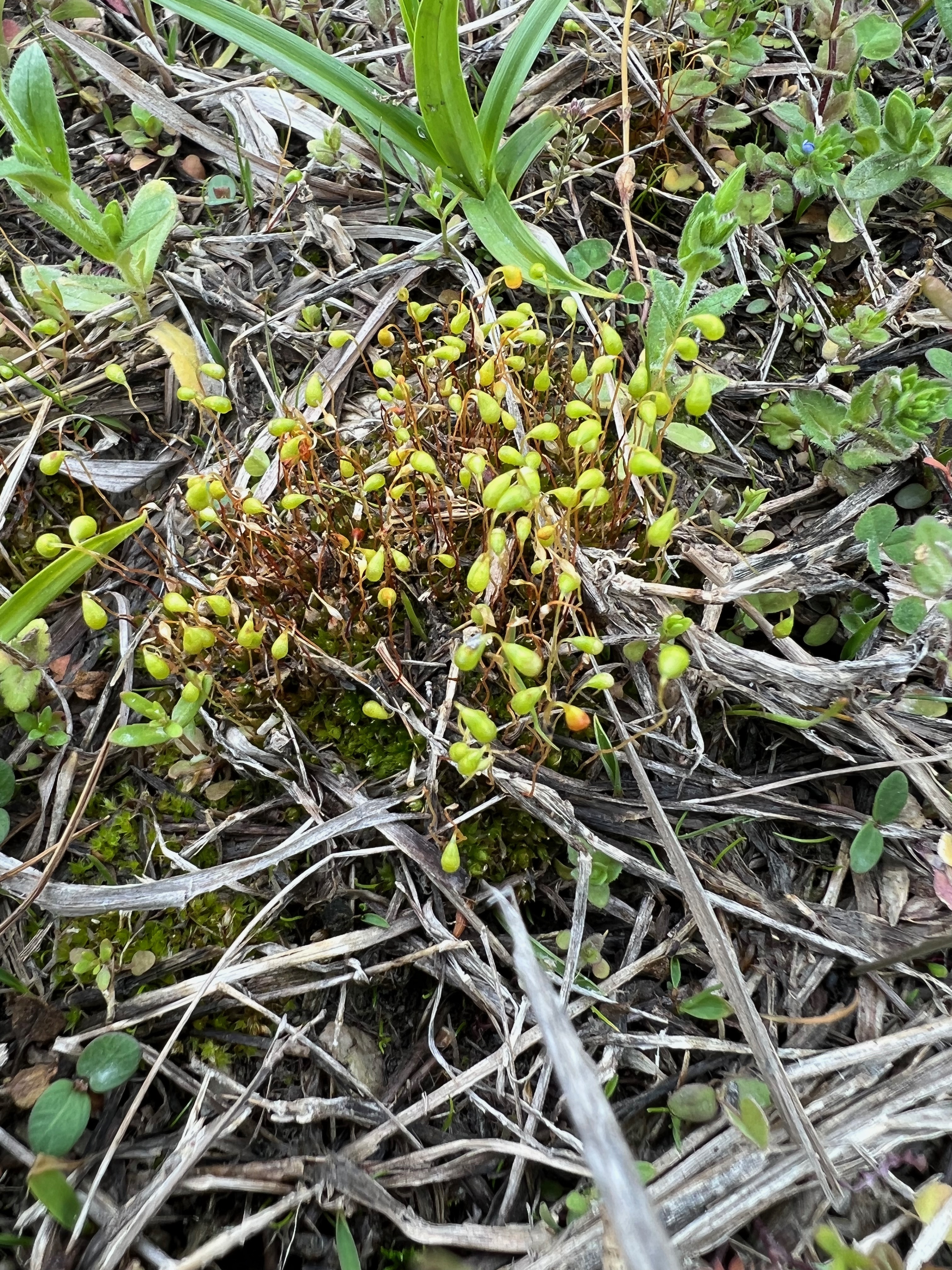
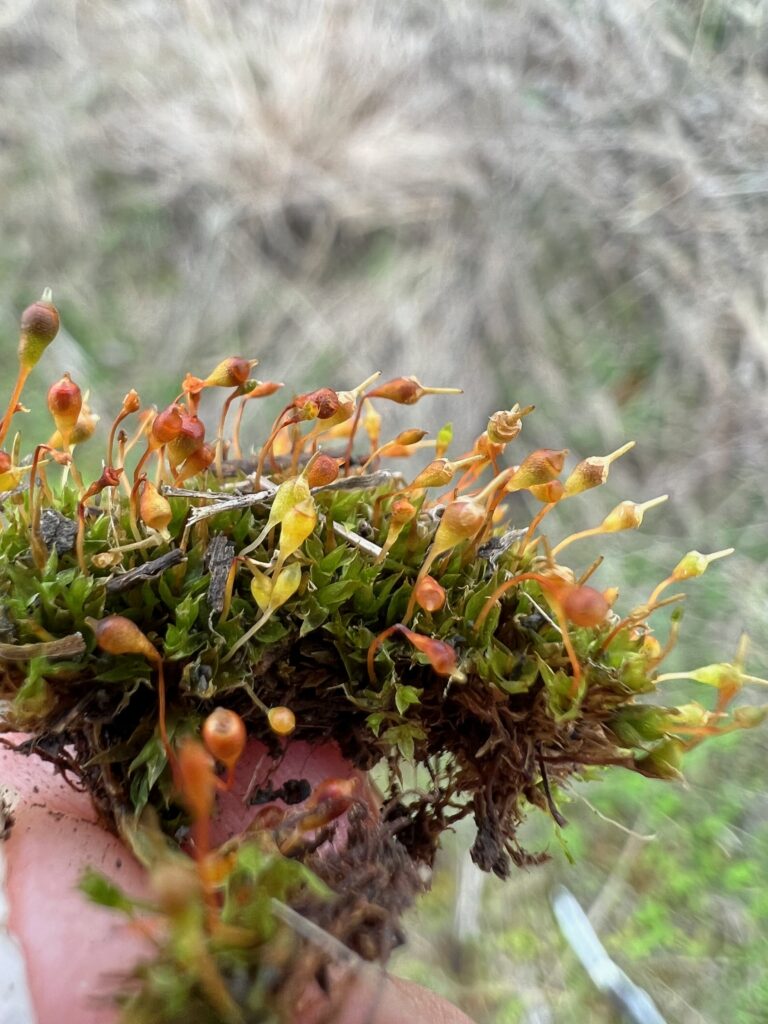
F. hygrometrica and P. pyriforme tend to be annual, weedy mosses that can often be found growing together. (Fig. 1 and 2) Not only that but I often find these two mosses in the same habitats that I find Draba–in those moist but bare areas of soil that show up in untended but mowed grass. This type of habitat is common along sidewalks, paths, dirt roads, and parks. These mosses have been observed to colonize recently burned ground. In fact, research being done in the southwest is working to develop methods where Funaria could be encouraged on recent burns to perhaps speed the recovery. Before the sporophytes appear both of these mosses remind one of a lush green velveteen. This trait is especially evident along paths and sidewalk cracks. In high-traffic areas neither moss is likely to produce “normal” sporophytes but in low-traffic areas, they will often send up their unique sporophytes in March through May. F. hygrometrica has a uniquely asymmetrical, nodding capsule that I think you can see in the photo. While P. pyriforme’s capsule looks a lot like its name–a pear-shaped or goblet-shaped capsule.
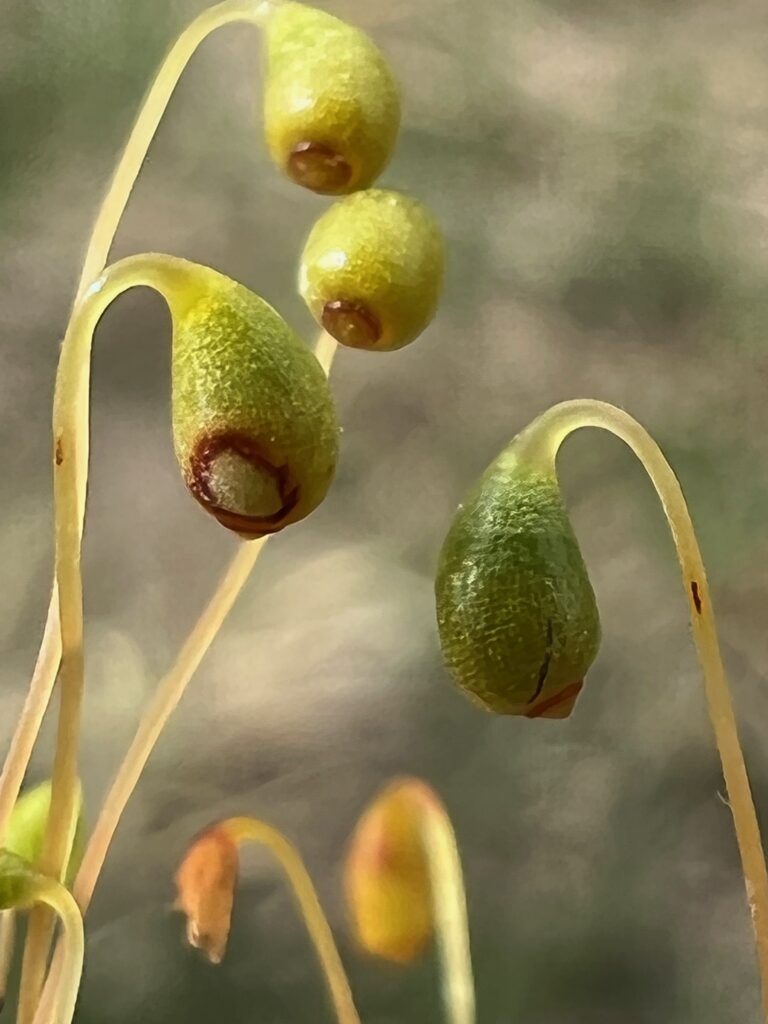
The almost fluorescent light, yellow-green of spring Weissia resonates deeply and draws attention by standing out in the dullish early spring landscape. I find it on bare ground or shallow soil sites. Its sporophytes are more typically shaped sporophytes. The dried leaves of Weissia tend to curl up in spirals like intertwined pigtails. Somewhat unusual for mosses the dried leaves also roll up to the top of the leaf surface creating a kind of canoe shape.
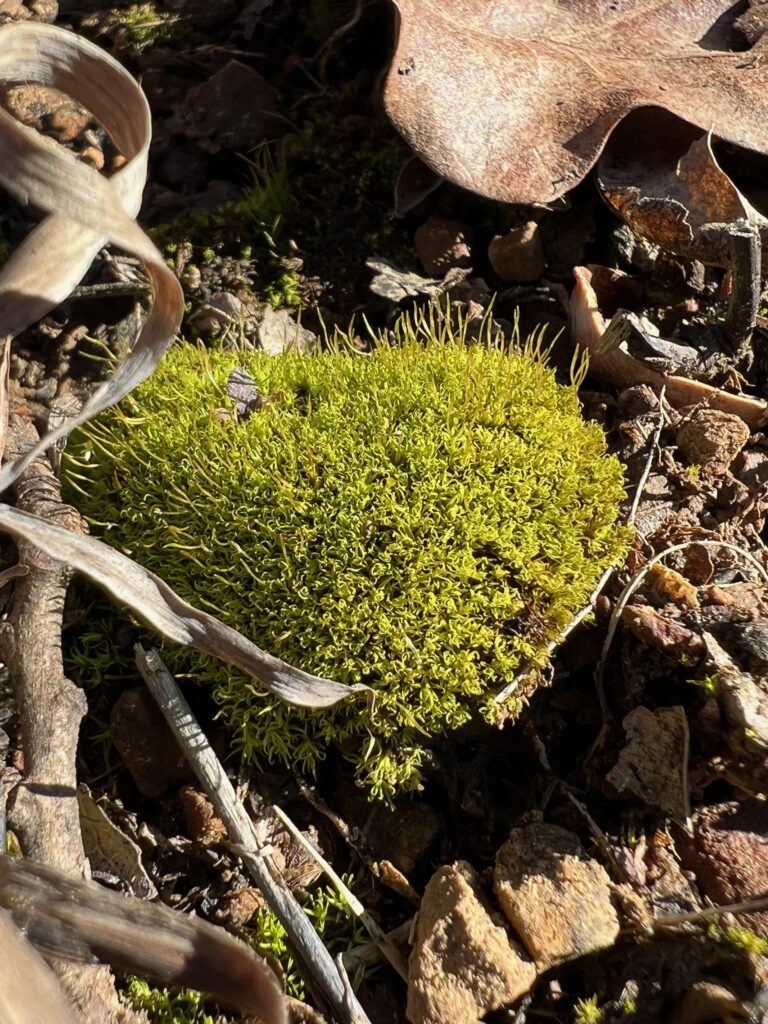
When I started on my moss journey I really didn’t appreciate how much coming to know and recognize individual mosses would alter my experiences and awareness on my walks. For more than 60 years I have walked past these mosses paying little notice to them beyond noting the green “velvet”. But once, I had keyed them out and identified them they have been like long-lost relatives. I can’t walk at the Baker Wetlands now without “checking in”, and monitoring the progress of the sporophytes, on the F. hygrometrica and P. pyriforme that grow along the paths. And when I’m searching for Draba in flower, in old cemeteries, or along the Kaw River, I can’t help but note the F. hygrometrica and P. pyriforme growing in the same habitat. In a similar fashion Weissia controversa tends to show up on the shallow soil over rock out crops and I just love spotting the bright yellow green in the early spring. While I typically try not to make too much out of just naming something, I can’t deny that knowing the names is the first step to telling the story of these mosses as they are encountered here and there. Hopefully, this little article can help you start telling your own moss stories.
